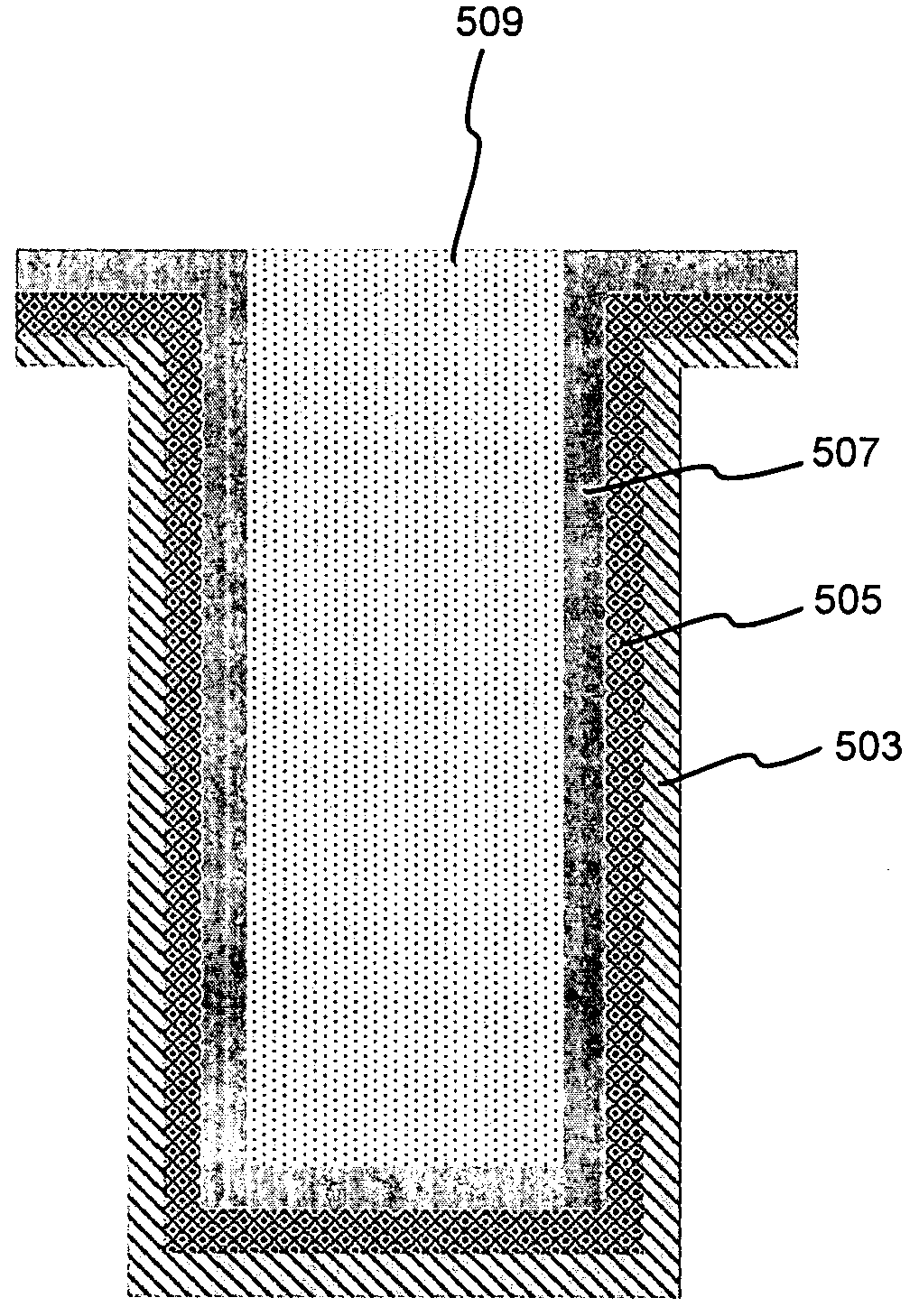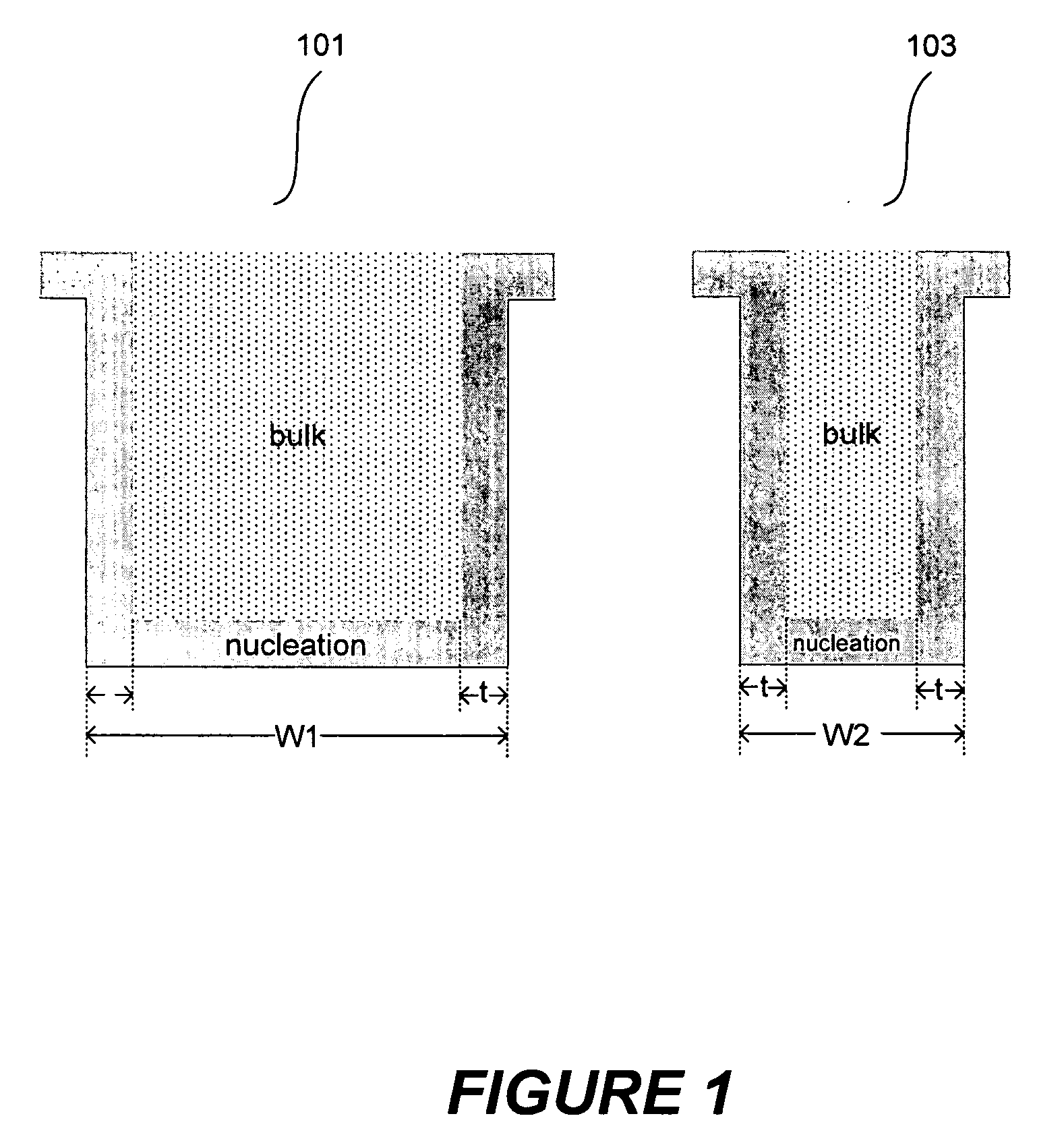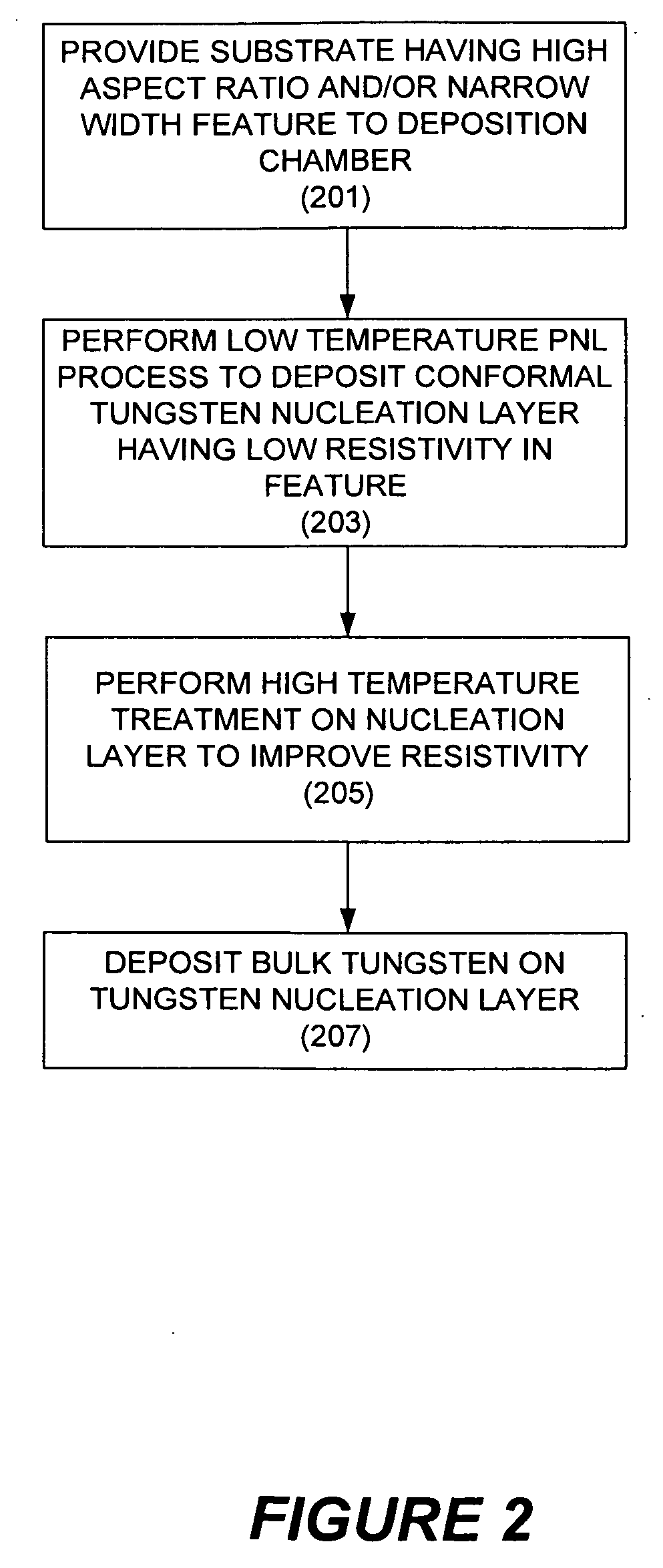Method for depositing thin tungsten film with low resistivity and robust micro-adhesion characteristics
a technology of microadhesion and thin tungsten, which is applied in the direction of liquid surface applicators, chemical vapor deposition coatings, coatings, etc., can solve the problems of inability to produce easily and reliably, and achieve good adhesion to the underlying layer, good uniformity, and low resistivity
- Summary
- Abstract
- Description
- Claims
- Application Information
AI Technical Summary
Benefits of technology
Problems solved by technology
Method used
Image
Examples
example 1
[0039]A W nucleation layer was formed in features having an AR of 8.5:1 and a top opening was 0.14 μm at 300° C. using tungsten nucleation layer deposition sequences shown in the table below. Nucleation layers of about 42 Å for process A, 25 Å for process C and 35 Å for process B were deposited. Treatment operations were then performed using sequences shown below at 395° C. (Note that for process A, the ‘treatment’ involved a B2H6 / WF6 cycle having longer pulse duration; tungsten film was deposited during this step.) Note that process is in accordance with the embodiments depicted in FIG. 4a. A bulk tungsten layer was then deposited on each nucleation layer. Resistivity at 600 Angstroms and resistance non-uniformity at 3 mm edge exclusion were measured. The films were also examined for areas of micro-peeling. Process conditions and results are shown below in Table 1
TABLE 1ResistivityatNucleation600LayerAngstromsMicro-DepositionTreatment(μΩ-4 mm EEpeelingProcessSequenceSequencecm)Rs %...
example 2
[0041]A W nucleation layer was formed on semiconductor substrates (planar) at 300° C. using tungsten nucleation layer deposition sequences shown in the table below. Nucleation layer thicknesses of about 35 Å for Process D, about 25 Å for processes E and F were deposited. Process D used a single B2H6 / WF6 cycles followed by three SiH4 / WF6 cycles in the presence of H2; processes E and F used a low resistivity tungsten deposition process without any hydrogen. Low resistivity treatment operations were then performed using 5 cycles of the sequences shown below at 395° C. Process D used pulses of B2H6 (no intervening pulses); processes E and F both used alternating B2H6 and WF6 pulses. Processes E and F were performed in accordance with the embodiments depicted in FIG. 4a. A bulk tungsten layer was then deposited on each nucleation layer. Resistivity at 600 Angstroms and resistance non-uniformity at 4 mm edge exclusion were measured. For each process, conditions were optimized to minimize ...
example 3
[0043]Similarly, when tuned for low resistivity, processes as shown in FIG. 4a result in lower particle counts and micro-peeling for similar resistivities:
TABLE 3NucleationTreatment - 5 cyclesResistivityLayerB2H6WF6atMicro-Depositionflowrate / flowrate / 600 ÅpeelingProcessSequencepulse timepulse time(μΩ-cm)observed?G1 B2H6 / WF6350 sccm / 0 / 09.83Yescycle + 31 secSH4 / WF6cycles (inpresence ofH2)H5 B2H6 / WF6250 sccm / 0 / 09.76No orcycles (no1 secreduced**H2)(**For particular split shown here, micropeeling was not measured; however from other experiments, it was shown that Process H results in no or reduced micropeeling compared to Process G.)
PUM
| Property | Measurement | Unit |
|---|---|---|
| Temperature | aaaaa | aaaaa |
| Temperature | aaaaa | aaaaa |
| Temperature | aaaaa | aaaaa |
Abstract
Description
Claims
Application Information
 Login to View More
Login to View More - R&D
- Intellectual Property
- Life Sciences
- Materials
- Tech Scout
- Unparalleled Data Quality
- Higher Quality Content
- 60% Fewer Hallucinations
Browse by: Latest US Patents, China's latest patents, Technical Efficacy Thesaurus, Application Domain, Technology Topic, Popular Technical Reports.
© 2025 PatSnap. All rights reserved.Legal|Privacy policy|Modern Slavery Act Transparency Statement|Sitemap|About US| Contact US: help@patsnap.com



